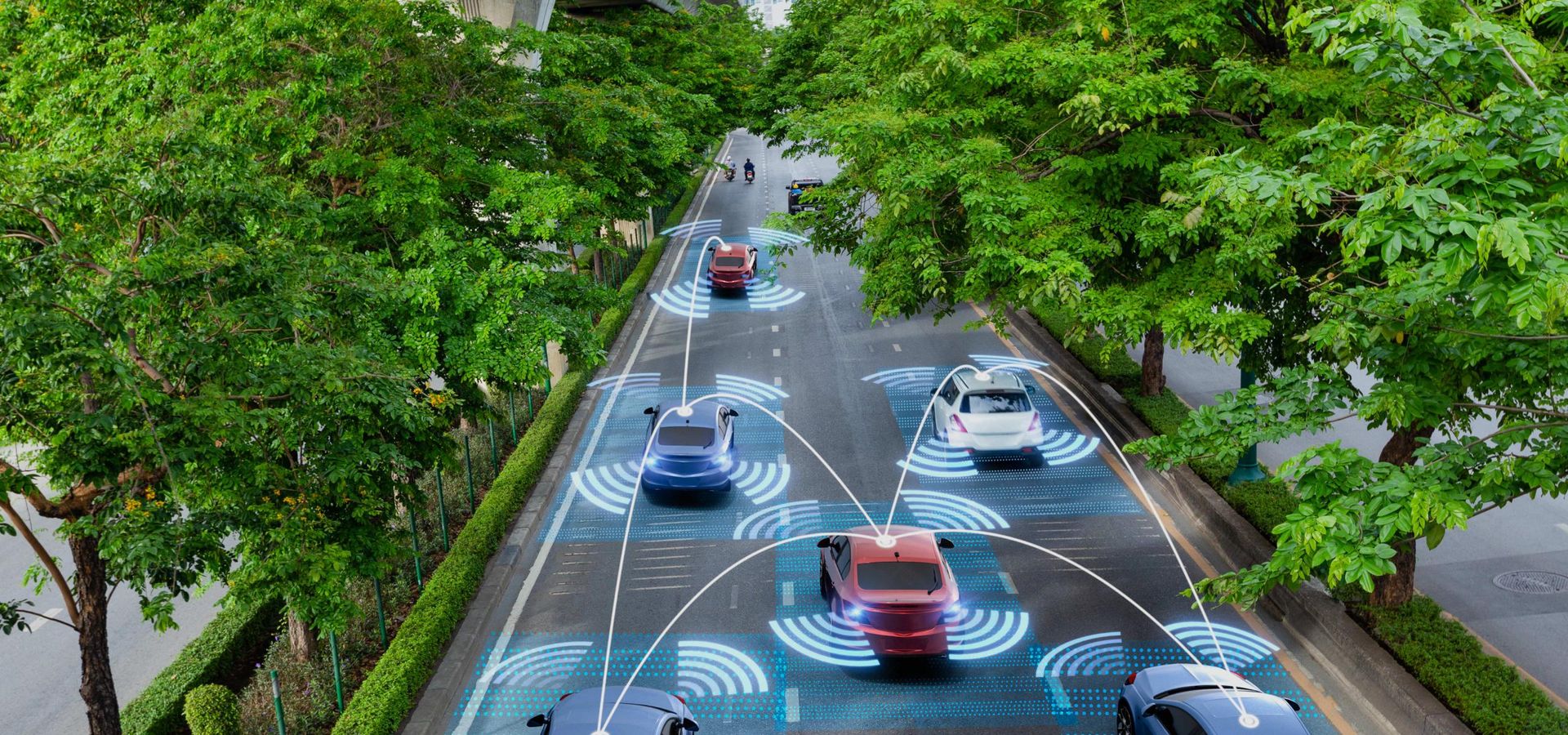Is there a real difference between the internet of things (IoT) and the internet of everything (IoE)? Some believe it’s the same technology and use both terms interchangeably, but they’re mistaken.
These two concepts are very much alike, but they are not the same. There are both common and distinct features of the internet of everything vs internet of things. As internet of things solutions are now becoming more commonplace, it’s important to understand how these two terms are interrelated.
Internet of everything vs internet of things, explained
The IoT
Let’s start with the more widely used term, “the internet of things,” and its origin. The IoT history is marked with the name of a visionary technologist, Kevin Ashton, who coined the term in 1999. He worked at Procter & Gamble at that time and was giving a presentation where he used the term when referring to RFID-enabled device connectivity allowing for the management of supply chain.
As Kevin Ashton admits in one of his interviews, he wanted to get the word “internet” into the title of his presentation to grab the audience’s attention, and the term’s creation was a very accidental thing.
IoT later came to be widely used to refer to a myriad of internet-connected devices that sense and share data with one another without people being involved. This is also known as machine-to-machine (M2M) communication technology.
The IoE
The term “the internet of everything” is relatively new, that’s why its application may cause confusion. Technology analysts and research firms often view IoE as the next stage of IoT.
As for the term “the internet of everything,” it was introduced several years later to offer a broader view of internet connectivity. Numerous sources state that the term was coined by Cisco, but the company itself denies that information. They claim that several technology companies, including Gartner and Qualcomm, started to use that word combination independently at approximately the same time as Cisco did.
IoE is an extension of IoT and is a term that refers to consumer products and devices that connect to the internet and have expanded digital features. It is an entire ecosystem where everything is interconnected. Thus, IoE is a wider concept that includes not only machine-to-machine communication (M2M) but also people to machine (P2M) and people to people (P2P) communication through technology. While the M2M connection is always important, IoE places emphasis on the other two types of communication.
The diagram above visually represents the internet of things vs the internet of everything. While they are highly interconnected, they play some separate roles. The internet of things mainly encompasses devices and how they connect to each other or people. The internet of everything has a broader scope and impacts many essential components of everyday life as we currently know it.
People-to-machine and the backward machine-to-people communication occurs between a human and a device. Turning on the lights or typing on a keyboard are some common examples of P2M.
People-to-people communication through technology is a type of connection when a human uses connected devices to interact with another human more efficiently. It allows for collaborations over vast distances. A basic example is a video-based conference call.
To get a better idea of how IoT relates to IoE, let’s illustrate it with an analogy from life. Imagine that “the internet of things” is a road with cars, buses, and other vehicles driving on it. Then, “the internet of everything” is the entire road system comprising of vehicles, drivers, pedestrians, traffic signals, crossroads, weather conditions, etc. To put it simply, IoT is a part of IoE, and a crucial one. Without IoT, the whole idea of IoE is meaningless.
Overall, the IoE market is estimated to grow at a CAGR of 15% and reach US$39 trillion by 2024 according to the Market Research Engine predictions.
The four pillars of the internet of everything
To better explain the IoE concept, it’s important to understand the four essential components that constitute the internet of everything:
1. Things
Things are the building blocks of both IoT and IoE. By “things,” we mean connected objects that gather information about their status through sensors and share this information with one another over the internet. The number of internet-connected things is growing year by year, and IDC expects it to reach 41.6 billion by 2025.
In IoT, connected things can be various devices—from consumer gadgets to water pipes. In IoE, almost every physical object can be a connected thing: from cows to monitor their health and track movements to milk cartons to manage their supply chain. Anything that is equipped with sensors and linked over public or private networks becomes part of IoE.
2. People
People are integral to IoE since no intelligent connection is possible without them. All in all, IoE is made by people and for people: humans use connected devices every day, analyze data, and harness the potential of data insights.
People not only play an essential role in P2M and P2P communication, but they may also become connected themselves. In healthcare, specialists can place sensors under patients’ skin or on the body to get information on a person’s vital signs for a better quality of patient care and treatment service. In this case, people act as nodes in the M2M communication process.
3. Data
Data is yet another core component of IoE. IDC made yet another prediction of connected devices producing 79.4 ZB of data in 2025, and this number will continue to increase exponentially every year. Currently, internet users generate about 2.5 quintillion bytes of data each day. For most of us, it’s hard to imagine how much information that is.
As the number of data sources and volumes grow, data management and analysis become more vital than ever before. Data alone is useless, but when it’s combined with thorough analysis, it helps businesses make faster and smarter decisions.
4. Process
Last but not least, process is a major IoE component. It determines how each of the elements above works with the rest to provide greater value in the digital world. When a connected thing gathers the right data and transfers it to the right person at the right time, the process is successful. The process is a linchpin of IoE connectivity that allows for creating new opportunities across industries.
One more important element is worth mentioning—a network. Wired (the internet) or wireless (LoRaWAN) networks make it possible for billions of devices to communicate over distances. Without networks, there is no IoT or IoE.
The equations below will sum up the preceding and help you differentiate between IoT and IoE.
The internet of everything at work
How realistic are the IOE growth predictions, and what are some feasible IoE opportunities? There are several examples of how IoE can work in action.
Connecting roads with hospitals to save more lives
There is a tragic statistic by the US Department of Transportation showing that 857 bicyclists died in traffic crashes in the United States in 2018. Many cyclists’ lives can be saved using the technological opportunities of the internet of everything. A cyclist’s helmet can be connected through sensors to ambulances, traffic light signals, and a hospital. That way, it becomes possible to get to the victim of a bike accident immediately and provide life-saving medical treatment.
If a bike crash happens, the helmet will retrieve the patient’s records before the ambulance picks them up. It can also find the nearest hospital and report to the doctor on the patient’s health status right away. This allows the doctors to gain time to prepare everything needed for treatment.
Furthermore, the ambulance will communicate with the stoplights on the road to hit all the green lights and get the victim to the hospital as soon as possible. By interconnecting everything, IoE promises to save precious time and even people’s lives.
Connecting food and people in the supply chain
Supply chain management is yet another example of how IoE may help to bring value and improve processes. The supply of fruit heavily depends on the harvest season. If an early harvest is anticipated, trucks can receive an alert and arrange a new delivery time with the supermarkets. Being aware of the early shipment, supermarkets will put the currently available stock of fruit on sale to avoid overstock.
This way, supermarkets will not suffer financially, and shoppers will have fresh market products at the right time. Going further, customers with a beacons-enabled connected shopping cart or smartphone app will obtain a discount notification and suggested recipes containing fruit as a bonus. This will increase customer satisfaction and loyalty.
Connecting homes for comfort living
IoE offers plenty of opportunities for smart homes, especially if powered with the technologies like fog computing. By connecting everything from a thermostat to a coffee maker, it is possible to fully automate daily life. Just imagine that the house greets you in the morning, makes your coffee, and feeds your pets as scheduled. It knows your mood, tastes, and even health status, so it may call in a specialist if you start getting sick. It may also adjust radiators to get hotter if you’re shivering and do many more things—like the best of science fiction come true.
Elderly care monitoring
With a large amount of the population becoming senior citizens, there is starting to be a vast array of IoE devices to help people as they age.
Most seniors have needs that are different from the rest of the population, and scientists and developers are stepping in to meet them. Known common ailments such as loneliness and lack of mental stimulation present many opportunities to alleviate elderly people’s hardships. There are now IoE products to help seniors stay active, keep in touch with loved ones, and promote happiness.
There are many healthcare-oriented robots on the market now and more are coming soon, that promote a healthy lifestyle for seniors. These robots can engage them in conversation and encourage them to participate in the outside world. They can also do things like report on the weather and, if it is pleasant, suggest that the senior goes for a walk. A robot can also remind to take medication and allow loved ones to send photos that the senior can then respond to via a video screen.
There are also now robotic pets designed to promote engagement and happiness in seniors. These pets have a unique ability to delight, calm, soothe, and provide companionship for those who may be struggling with loneliness. The robotic pets have sensors that respond to touch, prompting positive emotional responses such as purring or a calmer heartbeat. This encourages seniors to engage with the pet and therefore provides mental and emotional stimulation.
Is IoE the next big thing?
IoE greatly extends the IoT concept beyond pure device connectivity and binds everything on the earth—people, process, data, and things. Through the implementation of IoT solutions in manufacturing, healthcare, telecom, retail, transportation and logistics, and other spheres, numerous interrelated networks are built, enlarging the space for digital transformation.
It is not yet possible to say exactly if IoE will become the next big thing, but projections for the future are promising. Apart from the benefits listed in the use cases above, IoE is set to enhance asset and employee productivity, factory automation, and time to market, among other aspects.





